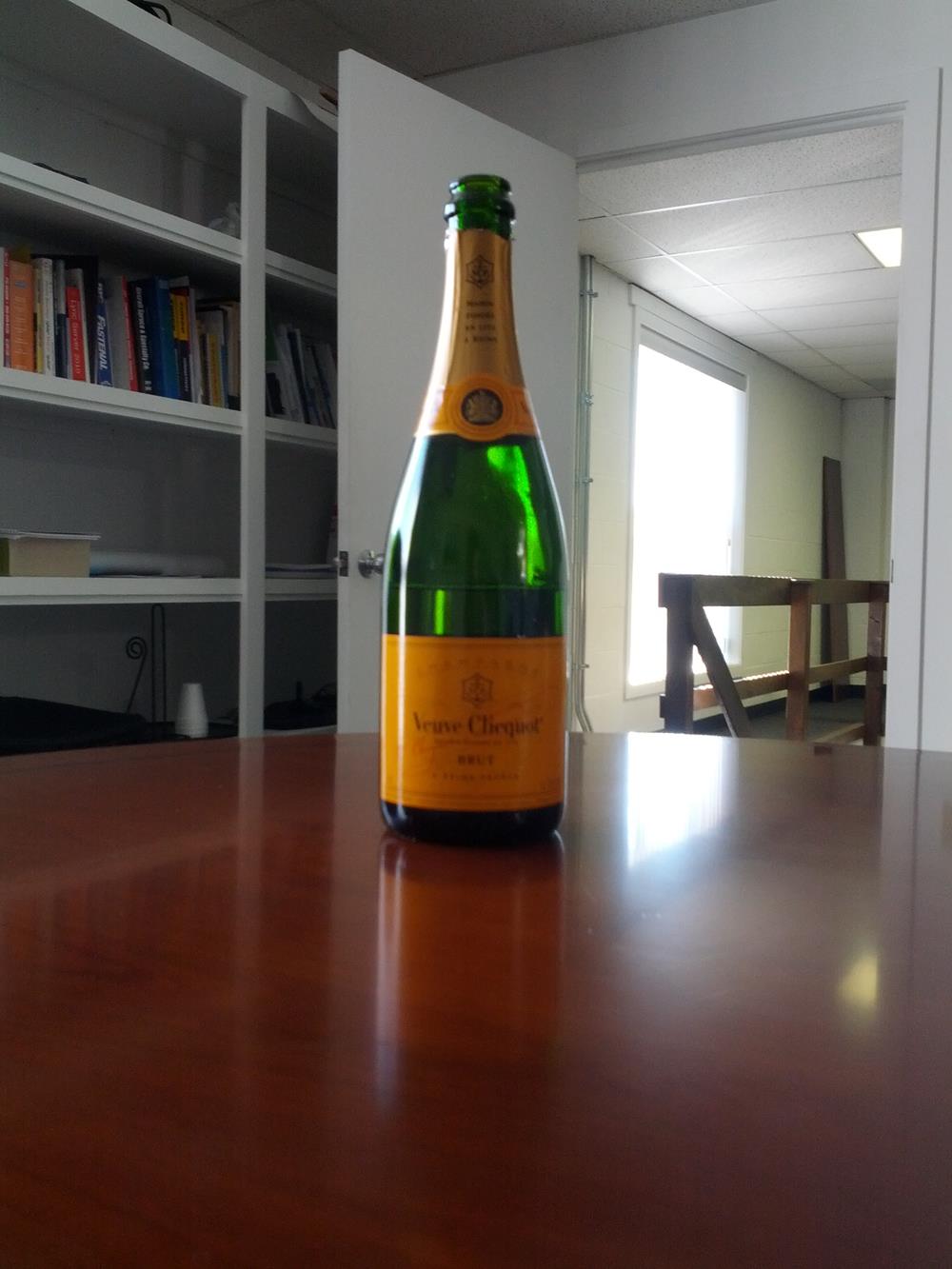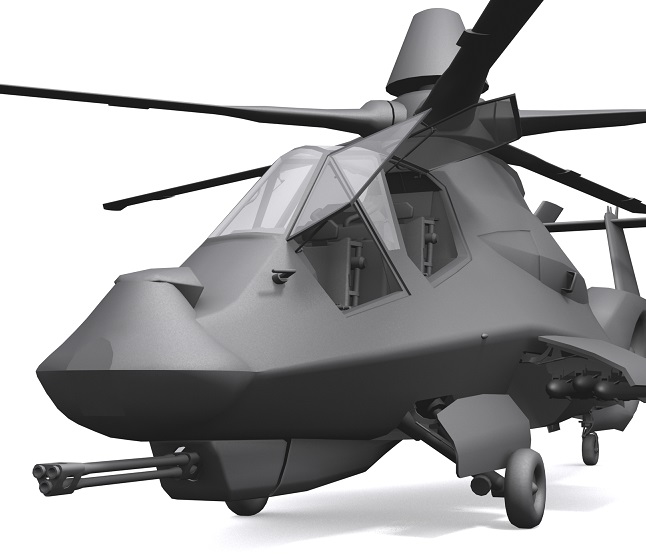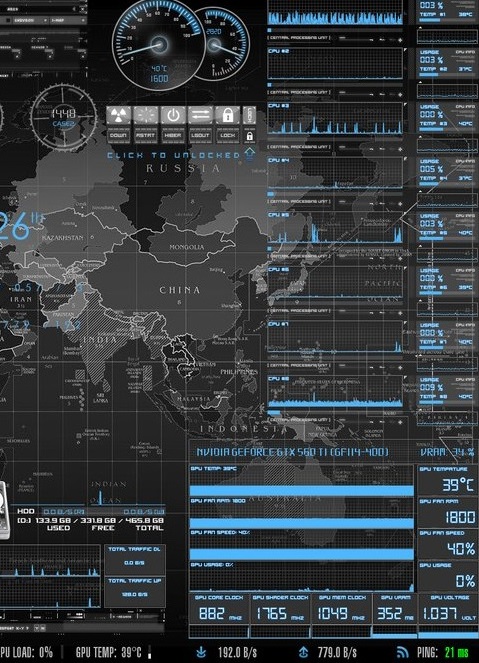Joe Piteo, Professional Biography
January 3, 2016
Acknowledgement
I have been in the business of science and technology for 50 years. I had the advantage of starting my career younger than most of my contemporaries. In 1964, I was accepted into one of the most prestigious “think tanks” of that era. The think tank was the vaunted “Advanced Materials Research and Development Laboratory” within the United Technologies Corporation and headed by Dr. Maurice Shank (Professor of Physics at MIT) and Frank VerSnyder (inventor of the “superalloy”, awarded the National Medal of Technology, and the Reagan Medal). This center of creative and analytical thought with its team of world renowned scientists was my introduction to technology.
I must begin by acknowledging the many inestimable contributions to my career that began with this group and continues to this day. This list is presented in an approximate historical order. I am pleased to acknowledge: Dr. Saul Rosen, who introduced me to the philosophy of the “scientific method”. Dr. Maurice (Bud) Shank, who tutored me personally in relativistic physics especially using his insight to the special theory of relativity. Dr. Bernard Kear, who showed me the world of micro- and nano-structures and nanomechanics. Dr. Maury Gel, for giving me the opportunity to publish my first peer-reviewed scientific paper.
I thank Dr. Joseph Lundquist, a dear friend and mentor for his insight to electro-chemistry and the science of electron and ion transport mechanisms; and, for our experiment in submersibles and submersible propulsion systems. Dr. Paul Stonehart with whom I explored the world of high vacuum physics, and solid-state fuel cells. Dr. John Oblak for his unwavering support and nearly 25 years of lessons in technology, management, and collegiality.
I thank Colonel James Satterwhite (US Army), who taught me the meaning of true leadership, especially under fire. Ray Leoni (Sikorsky Aircraft, EVP and director of Blackhawk development), who taught me the sharp realities of designing vehicles on which people’s lives depend. Sergei Sikorsky (son of Igor Sikorsky) for sharing with me the origins of the aerospace industry and the meaning of “pioneering”. Jim Fiorentino (founder, WaveTracer), who worked with me to create the first highly sophisticated engineering workstation.
I thank Dr. Robert Hermann (CTO UTC, Director NSA), who always flew cover for me regardless of the mission. Ken Olsen (founder, DEC), who saw the wisdom of distributed systems long before I did. Francis Bernard (founder, Dassault Systèmes) who believed we could build software to help people across the world work together. James Morgan (partner Morgan-Holland) who helped start and fund the UTC spin-off called, Matrix. Dr. Michael Wozny (RPI, NIST) who is responsible for cultivating my work with the many concepts involved around computer aided design and product data management. Oscar Civitella (founder, Adage SRL), a great friend and inspiration for Matrix and our corporate expansion into Western Europe. Lorenzo Mencarelli (director, SAP) who in addition to being a close friend, anchored the European team for the philosophical introduction of Igor and later the launch of Matrix. Marco Giudici (director, BTicino) who also was pivotal to European operations for Matrix and later AdageUS and the custom portals business worldwide. Sergio Gennaro (director general, Agusta), a very early devotee of Igor’s basic concepts and later an important advisor to the theories behind enterprise collaboration.
In 2004, eight people including the author began a discussion group that speculated on various technologies and products, focusing on energy. This included the author, John Jaser, Jim Rutherford, Michael Brook, Felix Tang, Joe V. Piteo, Jodi Dottori, and later Chris Kupczyk.
I thank John Jaser (founder, DSL) a very close friend whose breakthrough work in the broadband adoption of twisted pair networks was inspirational, and later as one of the “Exulans Working Group”, that conceived of and brainstormed the Exulans design initiatives. Jim Rutherford (VP, Hewlett Packard), a creative tour d ’force who’s genius and inspiration influenced both AdageUS and Exulans. Michael Brook (VP Development, PTC), who’s broad perspective has provided important introspection for the Exulans designs. Jodi Dottori (chief of staff, FASB), who was responsible for the establishment of Exulans as a company in a legal sense, and also the inspiration for the integrated generator feature of today’s PowerCenter. Felix Tang (co-founder, DSL), another creative mind with very broad spectrum acuity that has provided Exulans with many of its detail features and functions.
Finally, it is important to acknowledge the two other founders of Exulans: Chris Kupczyk, and Joe V. Piteo. Both of these men created Exulans, conceived of the PowerCenter, and directed the design, engineering, test, and manufacture of the PowerCenter.

Synopsis
1964 – 1974 The First Decade – Fundamental Science, Pratt & Whitney Aircraft (UTC)
- Design of micro(nano)-machinery
- Design of systems for hostile environments
- Solid-state fuel cells
- Solid-state gas reformation
- Plasma drives
- Submersible power and propulsion
1974 – 1984 The Second Decade – Aerospace Systems, Sikorsky Aircraft (UTC)
- CH-53E Super Stallion transmission design
- Computer aided design, Blackhawk main rotor blades
- Collaborative Systems, Special Operations Blackhawk
- S-76 computer-aided composite design
- Automated tube routing for the S-76
- Spatial collaboration, Seahawk Avionics
1984-1994 The Third Decade – Organizational software United Technologies Headquarters (UTC)
- InSight©, first generation PLM
- The Comanche© competition and collaboration
- First graphical massively parallel workstation
- Multi-CAD integration and “virtual collocation”
- Igor©, second generation PLM network
- International Engineering Network
1994-2004 The Fourth Decade – Internet Portals Matrix and Adage
- Matrix
- Portal architecture and toolsets
- Portals for Agusta, Brembo, Bayer, Nippon Steel, ECTA,
- Portal for Schering-Plough Physicians,
- Veterans Administration Portal
- Portal Architecture for FBI-CIA
- DSL.net enterprise
2004-2014 The Fifth Decade – Energy Exulans Corporation
- Outland Intelligent Lifting System
- Stabilized Sea Platform
- Zephyr Wind Turbine
- PowerCenter and PowerGuard
- RDAM
- Zero-loss Inverter





Chronologic Narrative
1964 To 1969 Pratt and Whitney Aircraft
Scientist and Engineer
I worked for the United Technologies Corporation from 1964 to 1994 in a wide variety of roles and at various divisions. I began in one of the most interesting organizations within UTC: AMRDL, the Advanced Research and Development Laboratory of Pratt and Whitney Aircraft. This lab was set up in the late 1950s to perform fundamental research in material science and was headed by the notable Dr. Maurice (Bud) Shank (earlier Chair of Physics at MIT) and Frank VerSnyder (inventor of the “superalloy”, awarded the National Medal of Technology, and the Reagan Medal). The lab included a team of more than 100 scientists with international reputations in physics, chemistry, materials science, and energy.
My work at AMRDL began with the design and fabrication of ultra-high vacuum and high energy “sputtering” or vapor deposition systems. As a junior engineer, I was tasked with supporting the scientific staff in creating instrumentation that would further their analysis of microscopic structures.
In time, the elaborate high vacuum environment that we had created allowed for the exploration of other domains. From this testbed, the group developed the first vapor deposited circuits on silica, deposited anode and cathode structures on solid electrolytes, the disposition of catalysts at the atomic level. In addition, we would advance the understanding of platinum sintering, the latent evaporation of Teflon (PTFE), and the effect of charge and discharge on the atomic surface of anode and cathode materials.
In 1969, I developed and demonstrated an operational (sub-scale) solid-state fuel cell capable of creating electricity by the transport of ions through doped Zirconia using unprocessed air and methane as fuel. This technique is only now finding its place in energy delivery systems as it is the basis for the Boom Energy fuel cell, 40 years after this first demonstration.
1969 to 1974 Pratt and Whitney Fuel Cell
Systems Engineer
My work with solid-state fuel cells and the behavior of catalytic structures led to my accepting a position at the new Fuel Cells Division of Pratt and Whitney. I began by helping to understand the problems inherent in the use and deployment of platinum catalysts in their phosphoric acid fuel cell (PAFC).
In contrast to my work at AMRDL, my focus here was commercialization. I was responsible for the development of the phosphoric “acid” fuel cell (PAFC) anode and cathode substrates, as well as components for the NASA “base” (KOH) cells then in use by the Apollo program. The Apollo 13 mission had taken place during my tenure at the Fuel Cell division. The Apollo 13 command module was powered by a Pratt and Whitney fuel cell. While the Apollo fuel cell was not the fault of the mission problem, it did rivet our attention on quality and robust design.
The objective of the new Fuel Cell division was to maintain its support of space flight on the one hand, while developing a commercially viable fuel cell for the general utility market on the other. My task then, became, first to select elements of the spacecraft program that had advantages in the commercial program, and then work on specific cost reduction programs that would eventually lead to a commercial and practical product.
By 1974, I had developed a method for reducing the amount of platinum catalyst to 10% of the original weight, while reducing the high surface area platinum’s propensity to degrade over time. In order to reduce the platinum content, we developed an inter-cell cooler with 100 times the effective heat transfer and twice the mechanical strength.
1974 to 1979 UTC Power Systems
Engineering Project Manager
By 1974, the Fuel Cell division of Pratt and Whitney had evolved into the Power System division of UTC. The commercialization program was still struggling, but the oil shortages of the 1970s was still an important motivation behind alternative approached to energy generation.
With advances such as the inter-cooler development program and many others, commercialization gained traction. The high cost of production and the issues of reliability were continually being reduced by specific project teams with targeted objectives.
The team I led was focused on the high cost of production. A typical 40 kW PAFC can contain over 100 gallons of phosphoric acid and it must be cycled above 250°C during production in the presence of methane and hydrogen. This is a troublesome production environment.
By 1979, the team had development the method for bonding PTFE coated thin copper tubes to solid carbon substrates without adhesive, and preserving the integrity of the 20 micron thick PTFE barrier. The team succeeded in increasing anode and cathode production yield from 10% to 95% and reducing the production time from 2 hours per unit to 2 minutes.
1979 to 1984 Sikorsky Aircraft
Manager of Engineering
Sikorsky Aircraft delivered its new flagship commercial helicopter, the S-76 in February, 1979. The first production variant, the S-76A would roll off the production line in 1982.
The S-76 would be the first helicopter to use bonded structures extensively. Both the fuselage and the main rotor contained load-bearing and critical structures that were chemically bonded as opposed to be mechanically fastened. My contributions in my new role at Sikorsky Aircraft was to insure the quality of these components on which life and death depended, and reduce the cost of their production.
The main rotor of the S-76 is a bonded composite and titanium structure that is hermetically sealed. The criticality of its production and the complexity of the production tooling argued for the use of cutting edge computer modeling techniques. In order to define the complex geometries required and then to command the machine tools with great precision to fabricate and assemble the main rotor, my team developed CAIDS (Computer Aided Interactive Design System).
By 1984, CAIDS was uniformly recognized as the world’s premier computer modeling system. Over time, CAIDS would be integrated into the design systems of Dassault Systèmes and be rebranded as CATIA, today the most widely used design tool in the world.
1984 to 1989 Sikorsky Aircraft
Director of Technology
In 1983, the U.S. Army initiated the Light Helicopter Experimental Program (LHX) that would eventually become the “Comanche Program”. In 1985, Sikorsky would form a team with Boeing Aircraft to develop this very sophisticated stealth aircraft jointly.
Success with computer aided design on the S-76, the Special Operation Aircraft, and the Sea Hawk variant of the Blackhawk demonstrated that sweeping operational changes were possible with new software. I took the lead role at Sikorsky Aircraft to introduce operational and organizational changes to facilitate design, improve collaboration, and create the software tools that would enable that and other changes.
My team implemented the integrated cross‐functional team concept for R&D for the Comanche design competition and supporting the DARPA Internet sister project, ULCE (Unified Life Cycle Engineering). I directed the investment of over $100M in technology to modernize their information infrastructure including the introduction and implementation of the first client‐server system, the first CAD system, the first integrated CAD workstation, networking, and use of the Internet.
In time, we had introduced InSight, an early collaborative engineering tool (1985) which led to the development of Igor™ (1987), a SQL‐based cross functional information management system tightly integrated with the early Internet development funded by DARPA and CERN.
It was becoming widely recognized that CAIDS and Igor had revolutionized the design and development process for complex systems. The Comanche Joint Development Team was now wholly dependent on these new systems, allowing the team to create designs that would be impossible without such facilities. The Comanche collaborative systems and methodology was widely copied and reproduced throughout the aerospace, automotive, and electronics industries.
In addition, my team sponsored and oversaw collateral developments in the hardware on which design software was operating. The need for independent and extremely powerful workstations was driven by increasingly voracious software applications for design and analysis. Working first with the Digital Equipment Corporation and then IBM, my team helped develop the first UNIX and AIX workstations.
1989 to 1994 UTC Headquarters
Director, Corporate Technology Transfer
Executive management of United Technologies recognized the transformation that was occurring at its Sikorsky Aircraft division during the 1980s. The corporation wished to transfer the lessons learned to its other divisions: Pratt and Whitney Aircraft (turbine engines), Norden (radar systems), Hamilton Standard (space systems), Carrier (air conditioners), and Otis (elevators).
In 1989, an organization was formed to accelerate the transfer of all technology throughout the corporation, and especially the new “networking” technologies that promised better communication and better designs without the traditional limitations of walls or even borders. That organization was called UTECA and it fell under the auspices of the corporation’s CTO, Dr. Robert Hermann (former director of the NSA), and EVP General Alexander Haig (former U.S. Secretary of State). I became the first director of that organization and the architect of that initiative.
It was my task to periodically brief and advise the vice presidents of Engineering for each division individually and quarterly as a council. My objective was to advise them on emerging technology and on the process and coordination of the various division-level technology initiates. By 1994, each division had a major Igor-like transformation fully funded and underway.
By 1994, UTECA had begun its annual international symposiums on technology. A four day event with 500 presenters and 500 company exhibitors including IBM, DEC, Sun, Boeing, Microsoft, Dow, 3M, General Motors, Agusta, Avions Dassault, Daimler-Benz, Mitsubishi, Nippon Steel, Daewoo, Hewlett Packard, NEC, Lockheed, Northrup, and many others.
By 1994, United Technologies had decided to spin-out a new privately held company that could profit from the commercialization of the Igor technology while accelerating its growth as software in scope and sophistication. The software and the new company was renamed “Matrix” (later MatrixOne NASDAQ: MONE). I was selected to be the leader of that new company.
1994 to 1999 Matrix
Founder and CEO
Matrix (MONE) was founded in 1994 to develop what has now become the world standard in PLM/PDM Systems. The Matrix software was an outgrowth of Sikorsky Aircraft’s award winning “Igor project”. Matrix was the first object‐oriented and network-based PDM (Product Data Management) system.
I directed the development of Matrix software and the engineering team. In addition, I managed the Matrix world‐wide roll-out and the early sales and marketing team introducing this first large scale collaborative system. We developed sales to over $30M by 1996. Matrix established a series of PDM and ERP systems at TRW, Zenith, British Telecom, ABB, Viking, Piaggio, Komatsu, Nikon, and Toyota.
In 1999, the company Matrix was purchased by Dassault Systèmes in 2001 and the software renamed “Enovia” where it continues to enjoy international success. Enovia is the most widely used PDM system in the world.
1999 ‐ 2004 Adage Incorporated (Internet Portals)
Founder and CEO
While Matrix was highly successful, I believed that an internet–based product with broader appeal than engineering was ready to be advanced. In 1999, I founded Adage Incorporated in cooperation with Adage SRL in Italy.
Matrix-like collaboration software was expanding into many areas under many names including “portals”. Since many of the Matrix development staff did not want to emigrate to France (Dassault Systems), the team began development of a suite of “portal tools”, I developed the group’s vision and strategy for software development. Those tools included: webData© (web database integration for SQL, ODBC, and OODB); webAnalyst© (web site analysis); webDisk© (web server); mobileIRC; and, mobileNews.
Adage then, in collaboration with companies like SET, DSL.net, and Link Systems, went on to construct major industrial and mission-critical portals. Adage clients included Microsoft, U.S. Government (U.S. Veterans Administration, the FBI, the CIA, and the Department of Defense), Sightlines, GD, Brembo, Agusta, Priceline, Hughes Schering-Plough, CIA-FBI Joint Task Force, ECTA (European Competitive Telecommunications Association), RayTel Medical, and DSL.net.
In 2004, Microsoft acquired the rights to the now proven software tools and to the software development staff. The staff became a part of various Microsoft teams including SharePoint and ASP and relocated in Redmond, Washington. The tools developed by the Adage team became a part of various Microsoft applications and servers.
2004 to 2009 Exulans Working Group
Chairman
In 2004, a small group of entrepreneurs and technologists met for the first time. Their intention was to discuss informally evolving technology, especially those technologies that might have a positive bearing on energy, energy generation, distribution, and feed stocks and precursors. Each member of the group had an extensive and diverse history in technology, engineering, manufacturing, computer design, and communications.
The group explored ideas as diverse as: biological organisms as a source of fuel from which to generate energy, the practicality of mining feed stock from under-tethered remotely controlled open ocean platforms, electrical generation by wind over a full spectrum of speed, generation by slow moving streams, open ocean resource mapping, and alternatives in distribution and highly distributed energy storage.
The group looked at the realities and commercial readiness of energy storage by: electrical capacitance; galvanism; gas compression; phase change of matter; micro-nuclear; mass and fluidic inertia; polymorphic strain; tidal; and, thermal geothermal and system mass.
By 2009, the group had funded and facilitated a number of experiments, pilots, and projects to delve more deeply into the technologic opportunities that might exist. A very refined vertical axis wind turbine that could be mounted co-axially on a mobile network antenna pole emerged as a leading candidate for expanded work.
However, to be efficient and practical, wind turbines and all other forms of so-called “alternative generation” require equipment or infrastructure that generally does not exist in the marketplace. This equipment is either cobbled together ad hoc, or avoided all together. The “missing infrastructure” would facilitate connection to the load, and control the contribution to the grid, it should handle wild variations in the load and the source, it should eliminate the need for demand-response linking, it should store energy, and it should be small, quiet, robust, and maintenance free. These features became the working design requirements for the Exulans PowerCenter.
In 2009, the working group voted to form the Exulans Corporation and begin work on the PowerCenter.
2009 to 2014 Exulans Corporation (Energy Systems)
Founder and CEO
The mission of the Exulans Corporation is to create and place into the market, practical solutions to the so-called “energy crisis”. Exulans has developing the revolutionary product – the PowerCenter. The PowerCenter is an appliance suitable for consumer use without maintenance or special installation. The PowerCenter is a device that is capable of producing electricity autonomously with or without a connection to the grid, storing energy, managing both load and source power, and facilitating the connection of virtually any alternative generating device. The PowerCenter is a sealed self-managing device that is internet connected and real time data reporting.
As CEO/CTO, I lead the design process that has brought this concept to prototype, and prototype to production. In addition, I have been the principal evangelist for the paradigm shift to distributed power storage on this scale. Since 2009, this team has been on the road talking to users and energy providers throughout the U.S., Europe, Eastern Europe, Africa, China, Korea, Central America, South America, and the Caribbean.
The PowerCenter has been assisted in its evolution by nearly 100 suppliers including Arrow Electronics, TE, Berg, Turck, and TDK Lambda. Largely this world-wide collaboration was made possible by the organizational technology and methods presaged some 20 years earlier. The PowerCenter is an excellent example of cooperative design for optimized distributed assembly and fabrication.
As of 2014, Exulans has five production prototypes ready to be installed in pilots. The plan is for these pilots to be sponsored by and performed in cooperation with highly visible organizations with major energy supply responsibilities. Discussions have begun with Canval (schools in Panama), United Illuminating (homes in U.S.), Northeast Utilities (homes in U.S.), COVAP (farms in Andalucía), Government of Chile (disaster response), the U.S. Navy (Marines Expeditionary Forces), and Eskom (police stations in South Africa), Vodafone (remote base stations), and Verizon (natural gas and solar hybrid).

Notable
Events
- Business Week magazine feature article entitled “Capturing the Mind of Man”
- Forbes magazine feature article entitled “Design at the Speed of Light”
- Design World Magazine article entitled “Ultralight/Ultra-safe Vehicle Design”
- Chairman Northrop Board of Advisors for the AAAS.
- Board Chairman – Rensselaer Polytechnic Center for Design Automation
- Member, National Institute of Standards & Technology Internet Subcommittee
- Inventor of the first solid-state fuel cell (YSZ, Yttria-stabilized zirconia)
- Inventor of the PTFE to Graphite bonding process
- Inventor of the Igor™ System
- Inventor of WebData™ (core of Microsoft IIS data interconnection strategy)
- Inventor of the Matrix™ Product Data Management System (PDM)
- Founder and Chairman of UTC’s World Conference and Exposition
- Founder of Matrix Corporation
- Founder of Exulans Corporation
- Recipient of the 1992 Aviation Magazine Laurels Award
- Recipient of Sikorsky Aircraft “Presidents’ Award” 1987, 1988, 1989
- Recipient of the UTECA “Man of the Year Award” 1991
Designs
- Fluidic gyroscopic stabilization system
- Privacy Sentry, computer screen security system
- The Moebius tension assembly device
- Personal Underwater Transport Platform
- Semisubmersible, autonomous “Island” system
- Bi‐directional asymmetrical thruster
- Ultra‐wide-word computing (Multiflow)
- Radar image simulation computer (WaveTracer)
- Multi‐CPU graphic workstation (Adage 3000)
- Heuristically Focused Head‐Up Display (FHUD)
- Integrated digital instrument panel (Aston Martin)
- Polymeric and bonded structural monocoque structures
- Air strut, rolling lobe force damper
- Carbon to PTFE bonding (P&WA Fuel Cell)
- CF low temperature gasification (discovery of)
- Embedded fuel cell coolers
- Ion plasma generator
- Mono‐atomic thin film patterns on silicon
- Solid‐state methane/oxygen to electricity conversion
- Nano‐structure testing machines
Papers
- “A fractographic study of Stage I fatigue cracking in a nickel-base superalloy single crystal”, D. J. Duquette, M. Gell, J. W. Piteo – Metallurgical Transactions (1970)
- “Bonded Monocoque Structures” – SAE Journal (1976)
- “Strategies for Engineering Technology”, Stresa, Italy – European Rotorcraft Forum (1979)
- “Advanced Workgroup Design for Engineering Teams”, Colorado Springs, CO – Catia Users Organization (1981)
- “HyperChange & the Evolution of Engineering Information” Orlando, FL – Catia Users Organization (1983)
- “Internet Computing and Global Collaboration Strategies”, Seattle, WA – Symposium on Information Strategies (1985)
- “The Evolution of Engineering Information and its Impact on Academia”, New York, NY – Symposium of Universities at Columbia University (1986)
- “Multilingual/Multi‐standard Information Control Systems” Tokyo, Japan – Nippon Steel Conference on the Future of Intellectual Process Management (1987)
- “Complex Configuration Control Systems and the Internet”, Boca Raton, FL – IBM Executive Management Conference (1991)
- “The Evolution of Networks and the Potential of the Internet”, Boston, MA – DEC Symposium for Fortune 100 CEO’s (1993)
- “The Importance of Mission Critical Information Systems”, Milan, Italy – SMAU (Society of Manufacturing Engineers) (1994)
- “Polymorphic Designs and the Impact on the O/S”, Redmond, WA – Microsoft (1997)
- “The Wireless to Infrastructure Gap in China”, Hamburg, DE – European Telecommunications Conference (1998)
- “Intelligent Heuristic Portals and the Future of the Internet”, Washington D.C. – Symposium of Agency Secretaries and Under‐Secretaries of the U.S. Government (1999)
- “The Internet and the Wireless Opportunity”, Monte Carlo, MC – TekWorld Symposium on the Telecommunications ‘Correction’ (2000)
- “Submersible Propulsion, Stabilization and Attitude Systems”, Miami, FL— Mechanical Ocean System (2001)
- “The Rise of Inter-casting and the Fall of Web Portals”, London, U.K. – BBC Conference on the Future of the Internet (2002)
- “Algae and Organic Energy to Mass Conversion”, San Francisco, CA– Venture and Investment Banker Conference (2003)
- “Energy Conversion Mechanisms and Alternative Energy Myths”, New York, NY – SAE Annual Dinner (2004)

